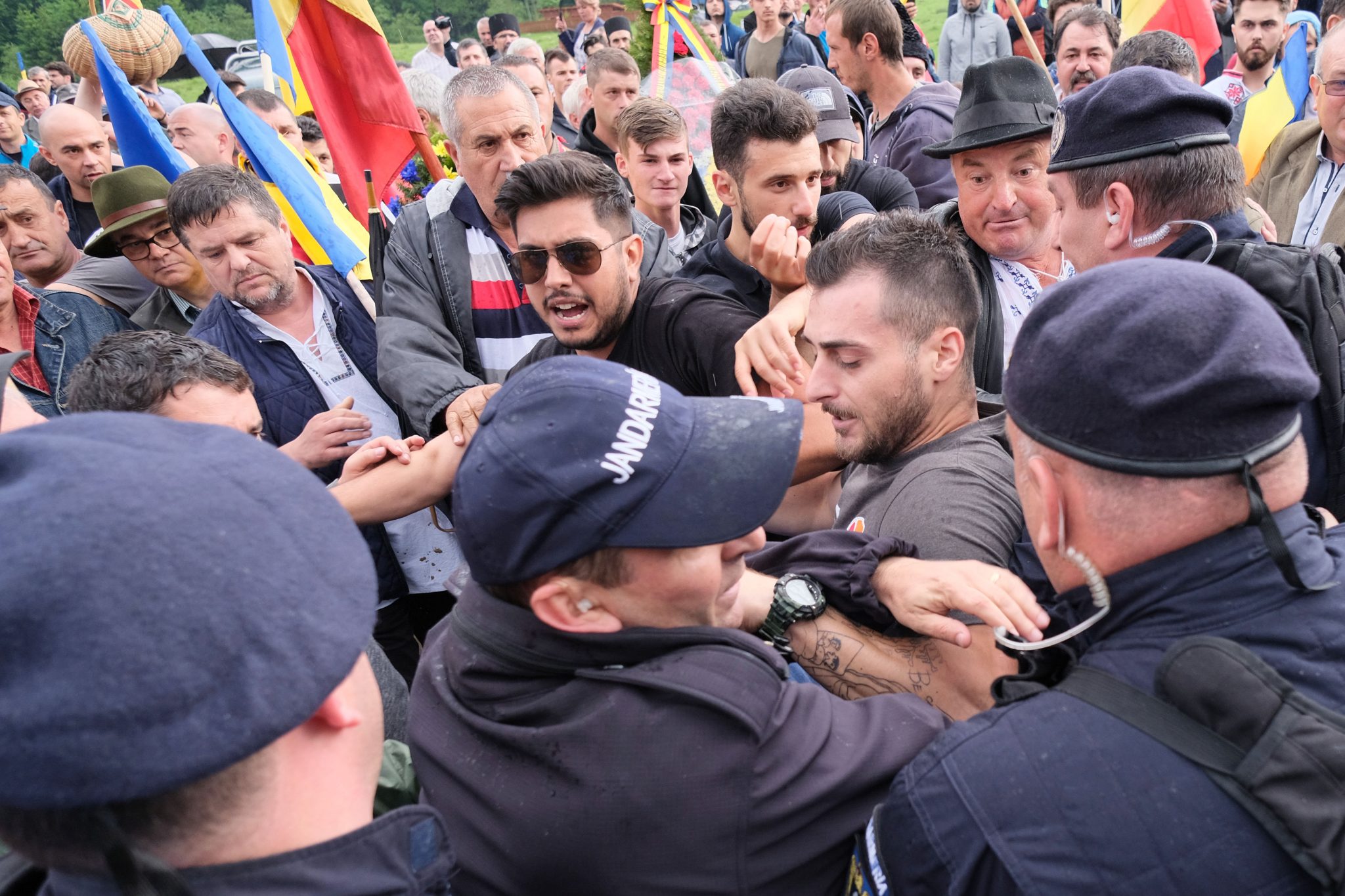Ethnic and Religious Clashes
 Anti-Hungarian demonstrations at the Valea Uzului military cemetery
Anti-Hungarian demonstrations at the Valea Uzului military cemetery
In June 2019, Romanian nationalists broke into a Hungarian World War I memorial in Uzvolgye, Romania. They first confronted the Romanian gendarmerie and then attacked an alternative ethnic Hungarian protest demonstration with flagpoles. Later they broke through the gates of the cemetery to the memorial stone cross. The reason for the confrontation was the decision of the local council of the Eastern Romanian city of Dormanfalva (Dormanesti) in the county of Bako, where mainly ethnic Hungarians live compactly, to install a memorial to the Romanian soldiers who died during the Second World War at the Uzvolgye cemetery. The problem is that the Uzvolgye military cemetery is the largest World War I memorial in the Romanian county of Harghita, where about 600 Austro-Hungarian soldiers are buried. The reason for this decision was unconfirmed information that soldiers of the Romanian army, who fell in 1939-1945, were also buried in the cemetery. As a result, 52 concrete crosses and one large Orthodox cross were installed in the fenced area of the cemetery.
Later, the Romanian authorities admitted that there was no legal basis for this, since any modifications to international war memorials in Romania can only be made with the prior approval of the Office for the Memory of National Heroes (ONCE), which is a subordinate organization of the country's Ministry of Defense. This department has never approved any changes to the cemetery in Uzvolgye. Despite the official position of Romania, the Dormanfalva government announced that the opening of the Romanian war memorial would still take place.
Many ethnic Hungarians (Székelys), in order to prevent the Romanian crowd from entering the cemetery, silently prayed, forming a human chain in the cemetery. Despite a strong police presence trying to keep the situation under control, the group eventually broke through the police cordon, crashed into the fence, and knocked down the gate from the inside. The Romanian nationalists then entered the cemetery, tore down the Hungarian crosses that stood on the graves, and began a Romanian Orthodox religious service to consecrate the Romanian war memorial, laying wreaths at the newly erected concrete crosses. At the same time, a group of Romanians threw stones at those Hungarians who formed human chains.
Activists of the new right-wing radical party AUR took an active part in the action, which in a few months will receive almost 9% of the votes in the elections to both houses of the Romanian parliament, led by its leader George Simion. In fact, George Simion, previously an ultras, a football fanatic and an activist for the unification of the Republic of Moldova with Romania, became famous thanks to his participation in this action.
The Hungarian government submitted a letter of protest, and the Romanian ambassador to Hungary was summoned to a meeting at the Foreign Ministry, which the ambassador declined. Instead, the Romanian Foreign Minister asked his Hungarian counterpart to send "a clear message to the Hungarian community in order to avoid confrontation and escalation of tension."


